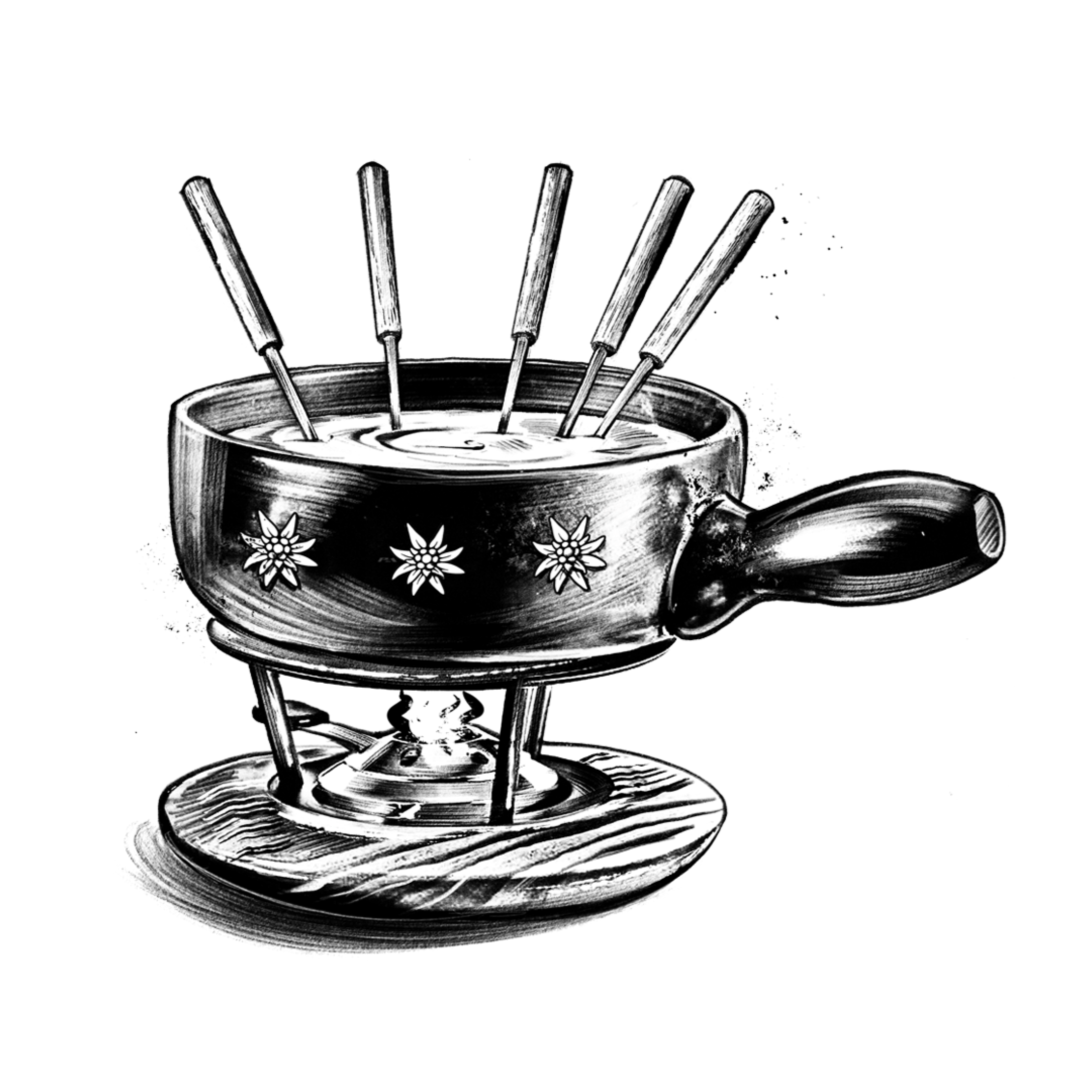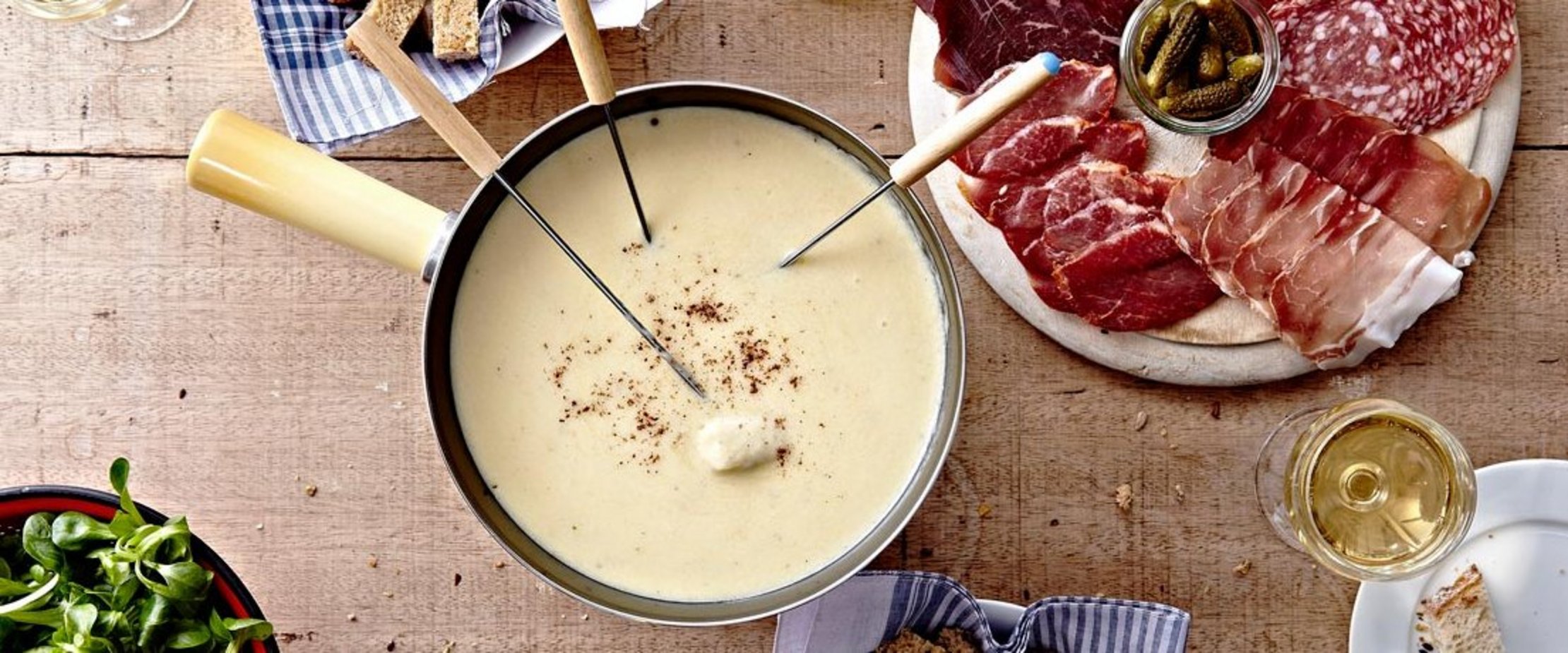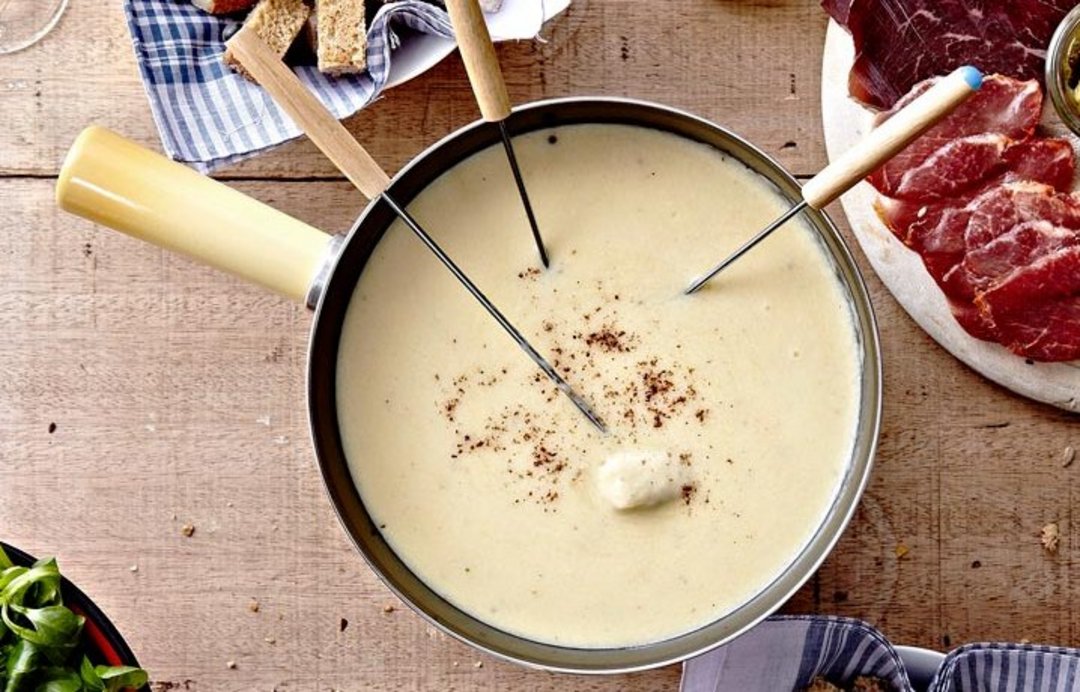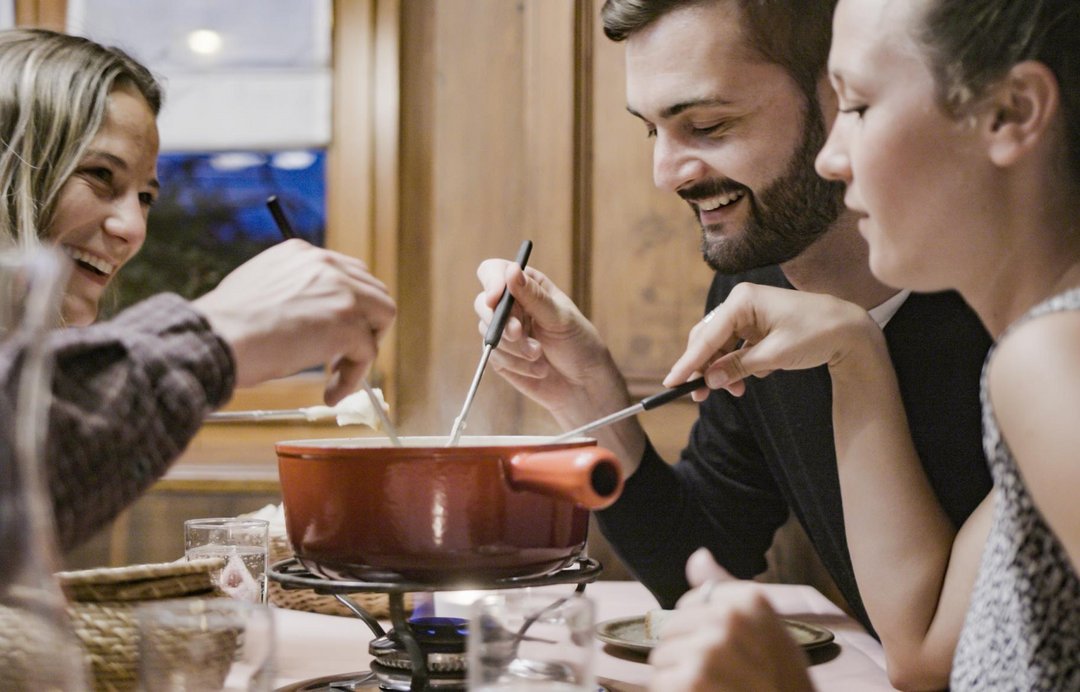A good fondue pot – or caquelon – a reliable rechaud stove and fondue forks are all you need to make fondue. Apart from the cheese, the only other must is the bread – everything else is optional. Fondue is often eaten in the classic way, i.e. without any side dishes, starters or other knick-knacks. However, in recent years, there has been a boom of innovative ideas to add more variety to fondue. And so, everyone eats their fondue just as they like it best – en Guete!
Seasoning
Traditional fans of fondue tend to find garlic and pepper sufficient; at most, they might add a touch of nutmeg. Bolder fondue fans sometimes try adding chopped onions, shallots or tomatoes, or season it with paprika, green pepper, chilli or curry powder.
Starters
Before you serve fondue, suitable starters include some dried meat (e.g. Bündnerfleisch, Walliser jerky or Mostbröckli), raw vegetable sticks with a light quark dip or a fresh, crunchy salad. But you certainly don’t need a starter – you can simply dive straight into this rich dish.
Drinks
Some people think that you can only drink white wine with both fish and fondue. Wrong! This rule hasn’t been strictly enforced for a good while now; cheese fondue is often served with red wine too, even in traditional settings. The important thing here: red wines need to be fruity, not too heavy and to not contain too much tannic acid. If you want to play it safe, simply stick to a dry white wine (e.g. Fendant or a Waadtländer Chasselas), champagne, mild black tea or – especially for kids – chilled apple juice or simply water. Fondue is also traditionally accompanied with the odd tipple: a mouthful of Kirsch, Williams, Calvados, Grappa or Pflümli (plum liqueur) adds a touch of spice – and heat! – to your cheese experience.
Dunking
Typical fondue bread cubes are cut from white bread, but half-white or wholegrain bread also works well. If you like, you can also use wholemeal bread or bread for toasting, fried in butter. Other options include boiled potatoes, blanched vegetables or fruit (e.g. pears, apples or grapes). Our tip: cheese sticks better to bread that is at least a day old than to fresh bread.
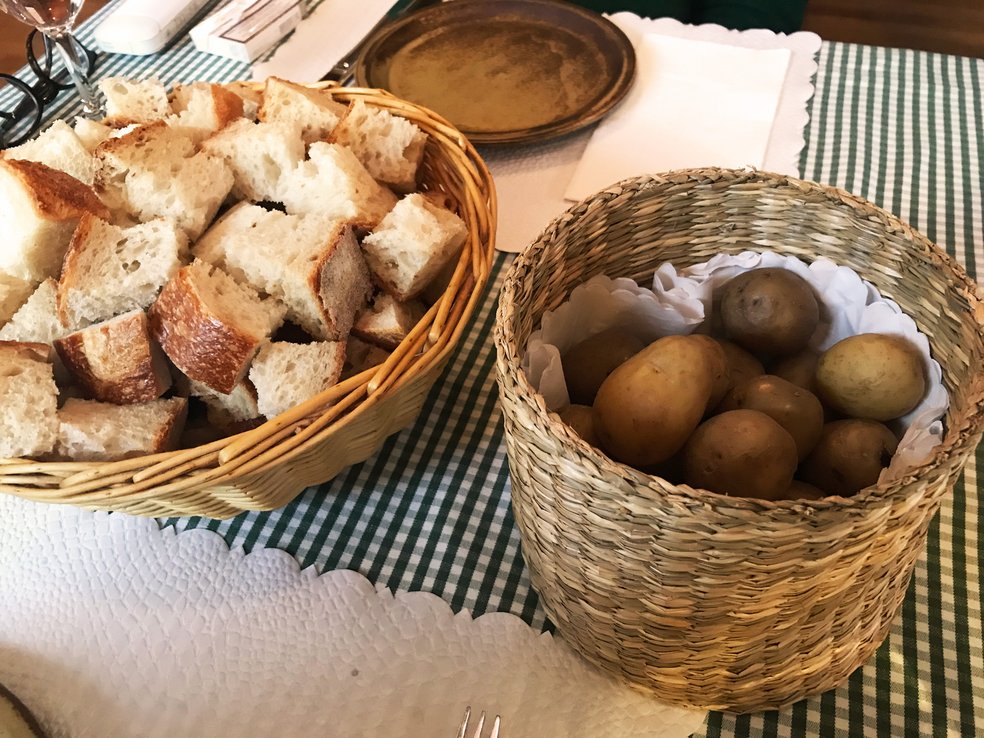
Side dishes
Fondue is a standalone culinary experience – you don’t need anything else. But, if you aren’t such a purist, you can serve it alongside gherkins, pickled onions, olives, sun-dried tomatoes, chilli, asparagus, corn on the cob or fruit.
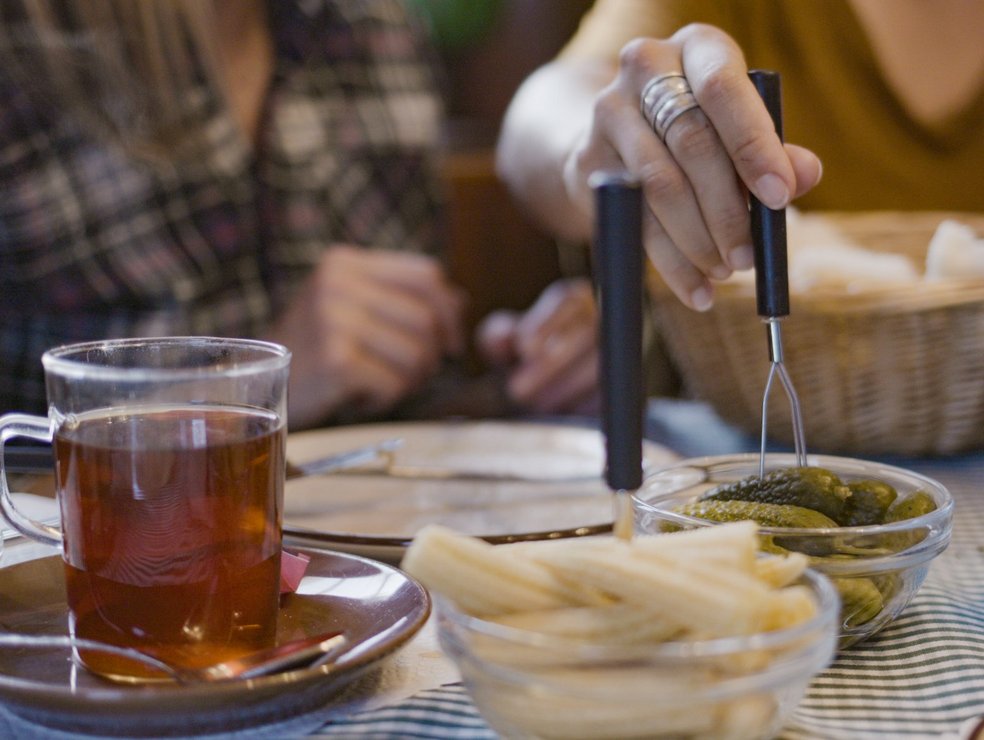
The caquelon
Most caquelons – the traditional name for a fondue pot – are made from cast iron, enamelled steel or ceramics. The most important thing is that the pot is the correct size – it needs to have a capacity of at least two litres to make fondue for six people. Do you haven an induction stove? Then opt for a cast iron caquelon, as they work best with induction hobs. Fondue pots are generally not dishwasher-safe – but you can get specially designed caquelons that can be put in the dishwasher. After eating the fondue, make sure you fill the caquelon with cold water and leave to soak overnight: this makes it easier to remove the cheese remnants the next day.
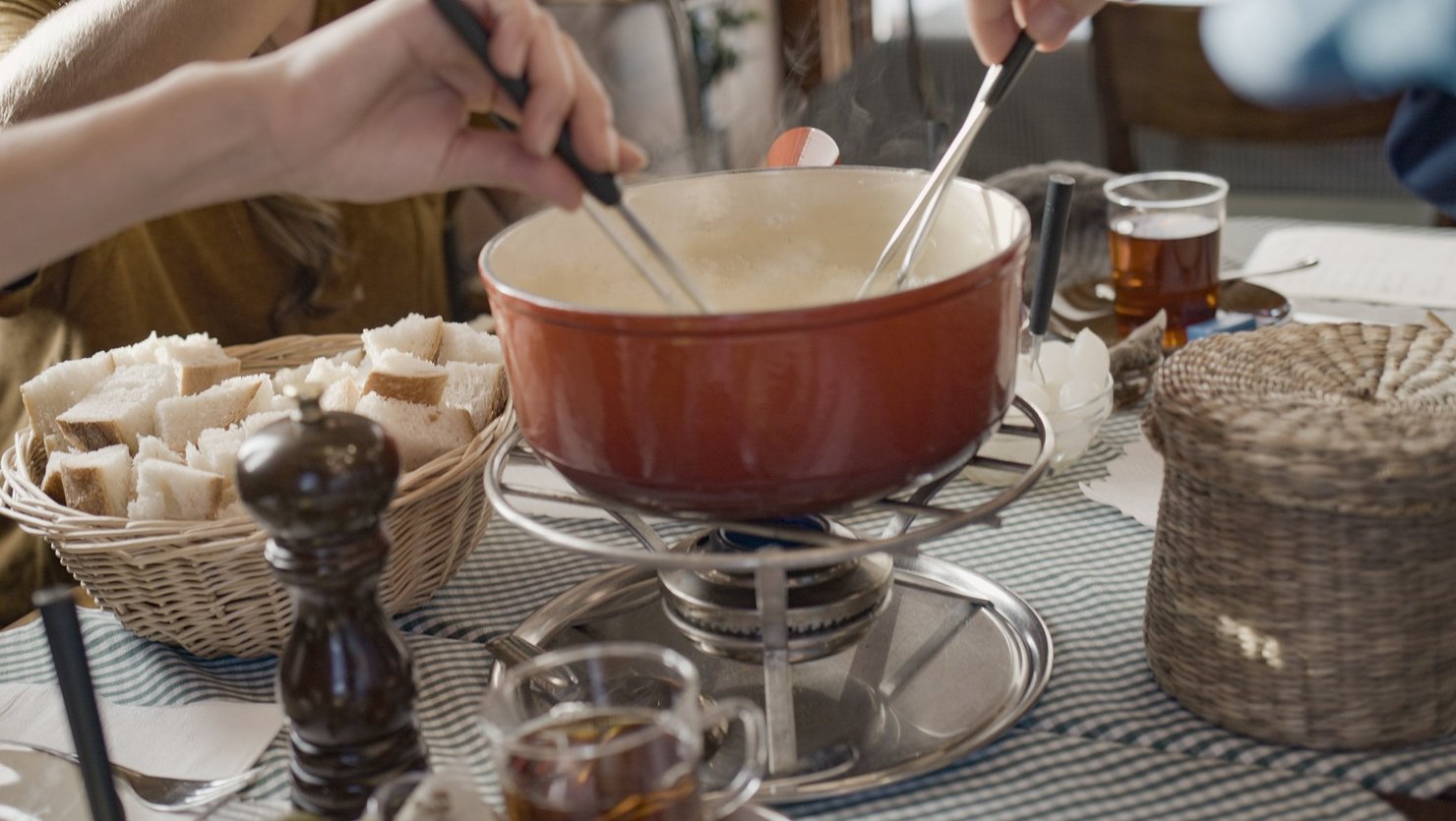
The rechaud
Classic rechaud stoves are filled with methylated spirit. Modern varieties can be filled with fuel paste, which has the advantage of not spilling and causing a fire. Electric rechaud stoves with a power cable have been available for a while now too – but, somehow, the little flame burning below the fondue pot is a key part of the fondue experience.
The dessert
If you still have room for dessert after your fondue, you are probably looking for something light. A delicious sorbet, light ice cream or even a fresh fruit salad are all great options for rounding off the meal. An airy mousse is also not too heavy.
Who invented it? The history of fondue
There is much debate about the precise history of cheese fondue. Both the Swiss and the Savoys in France claim to have invented fondue. Even the Aosta region in Italy has been enjoying melted cheese as a regional speciality for decades – the Fonduta Valdostana. One thing's for sure: cheese fondue was invented in the West Alps.
Cheese fondue became an established Swiss national dish in the 1950s. Namely, with the addition of the recipe to the army cookbook. Following their military service, soldiers brought the fondue recipe back home to their families and it spread across the country as a result. The first ready-made fondue was available from 1955. In the 1970s and 1980s, cheese fondue was widely advertised as a result of the FIGUGEGL campaign by the Swiss Cheese Union. These days, pop-up fondue stalls appear across the country each winter and are synonymous with the connection between tradition and modernity.
